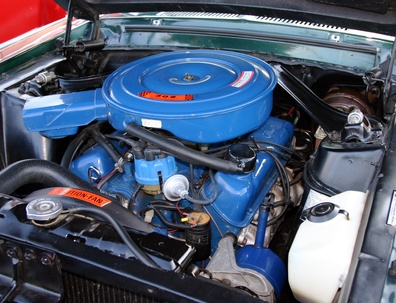
A tune-up is one of the most important responsibilities of a vehicle owner, for it is the tune-up that determines in part how long the engine will remain reliable and whether it will operate at its most efficient. V-8 engines derive their name from their configuration. Featuring four cylinders on both sides of the engine block, the block resembles the letter V. As with all internal combustion engines, a number of components must be periodically checked on the eight-cylinder, and some components must be replaced. Fortunately, doing so is fairly straightforward.
Check the cylinder compression with a compression gauge to determine whether a serious engine problem exists. A compression gauge measures the maximum amount of air pressure produced by a piston at the top of its compression stroke. Pull the distributor wire off of the distributor cap, then remove each of the engine's eight spark plugs. Insert the gauge into any spark plug opening on the cylinder head, then crank the engine with the ignition key. The gauge's needle must be within the green band on the gauge. If it is outside of this band, have the engine inspected by a professional. Repeat the test for the remaining seven cylinders.
Examine the air filter for excessive dirt and replace the filter if necessary. Hold the filter up to a light source. If you cannot see light through the filter, replace the filter.
Replace the spark plugs in regular intervals, as recommended by the vehicle's maintenance schedule. The metal tip of a spark plug burns away over time, substantially reducing the plug's effectiveness. Always replace the plugs with ones recommended by the vehicle's manufacturer, as not all spark plugs are designed the same way. Before installing the plugs, check and adjust their gap, which refers to the amount of space between the two metal contacts on the tip of the plug. Determine what the proper gap is by referring to the engine specifications manual. Measure and adjust this distance with a blade-style feeler gauge.
Check the engine's ignition timing with a timing light. This often-overlooked step is important, as proper timing can greatly enhance fuel efficiency and power. Consult the engine specifications manual for the correct setting. Check the timing light manufacturer's instructions for using the light, as designs differ. Loosen the bolt at the bottom of the distributor with a wrench, then rotate the distributor to adjust the timing.
Check the entire length of all eight spark plug wires, as well as the single ignition coil wire, for cracks and burnt tips, which can reduce the power of the spark and reduce fuel mileage.